Historical Highlights
Compiled and created by Ohio National Guard Heritage Center
In Their Own Words

Photo from the Ohio National Guard Heritage Center Collections
Dec. 12, 1776
Ohio units part of Armor Branch’s 247-year history
The Armor Branch of the U.S. Army traces its origin to the cavalry, which began on DEC. 12, 1776, when the Continental Congress authorized the organization of a regiment of cavalry.
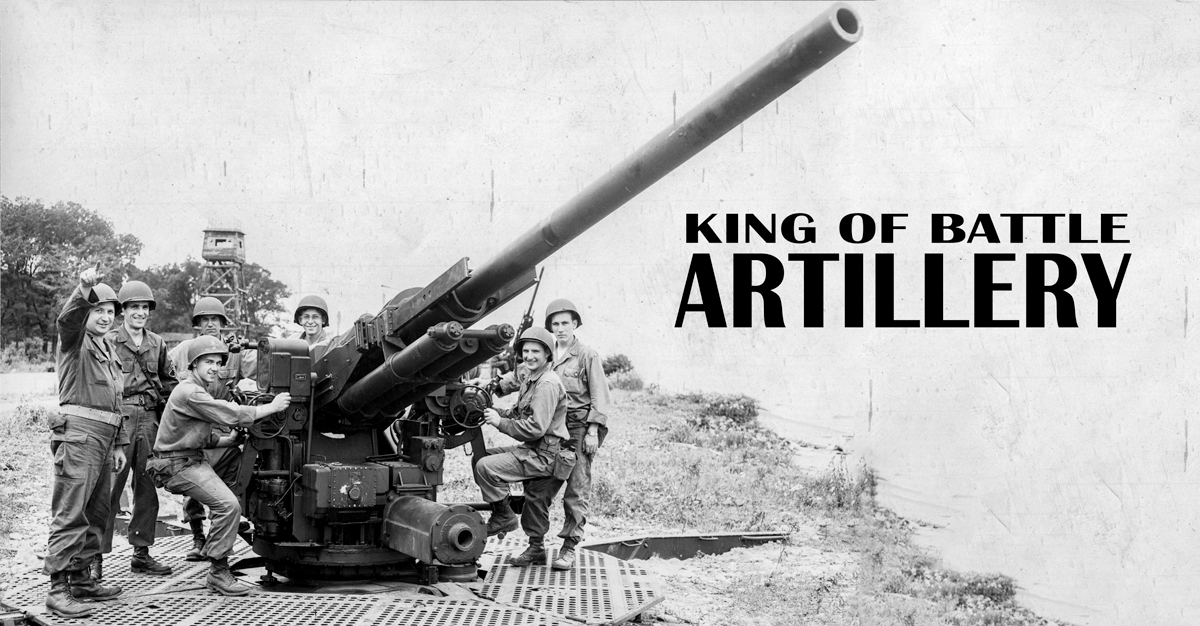
Photo from the Ohio National Guard Heritage Center Collections
Nov. 17, 1785
Ohio National Guard lineage goes back to Civil War
On NOV. 17, 1785, the Continental Congress unanimously elected Henry Knox “Colonel of the Regiment of Artillery,” marking the birth of the artillery branch in the U.S. Army. Although field artillery and air defense artillery are separate branches, both inherit the traditions of the artillery branch.
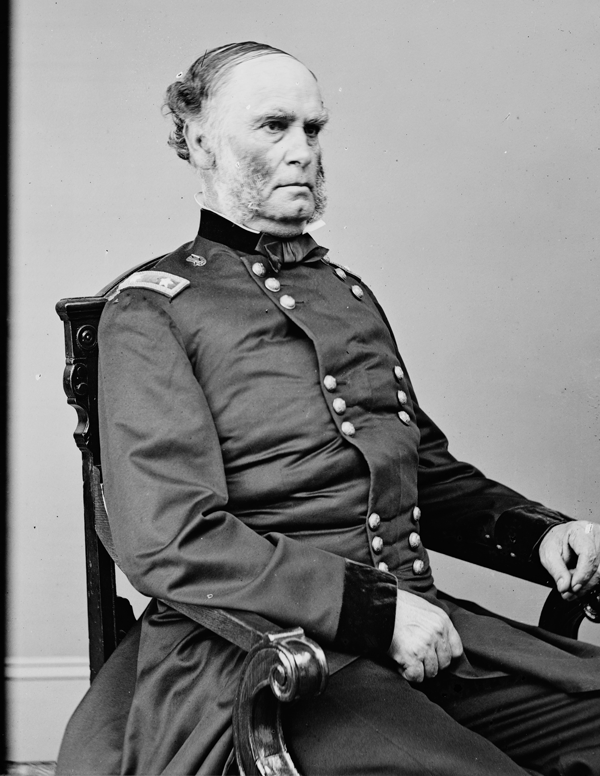
Photos from Library of Congress
Samuel R. Curtis, pictured here as a major general during the Civil War, was the adjutant general of Ohio at the outbreak of the Mexican War in 1846. Curtis, a graduate of the U.S. Military Academy, resigned his post as the head of the Ohio Militia to command the 3rd Regiment during the war.
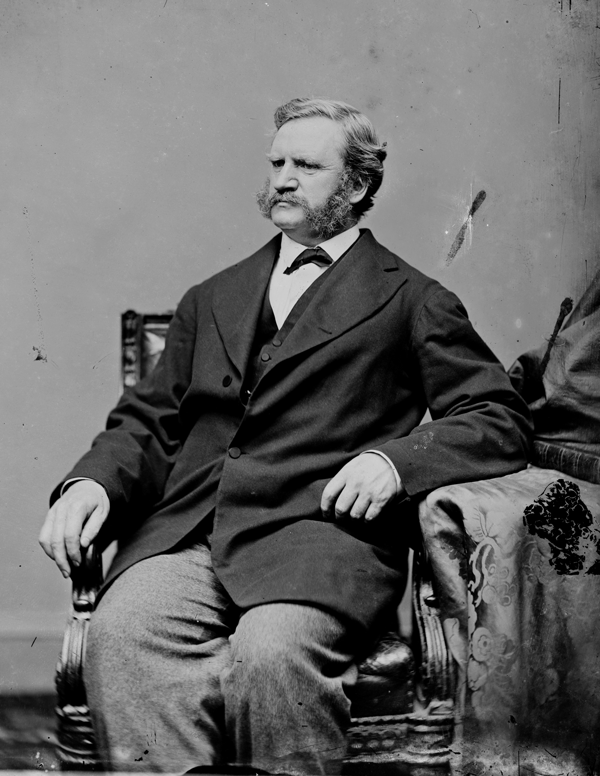
Col. George W. Morgan, photographed here circa 1860, was a veteran of the Texas Revolution and was a lawyer in Mount Vernon, Ohio when the call came for volunteers to serve in the Mexican War. He organized a company from there and after arriving at Camp Washington, was elected to command the 2nd Regiment during the war, leading it during the Battle of Buena Vista. Today’s 148th Infantry Regiment is the descendant of the 2nd Regiment and bears a campaign streamer for Buena Vista.
May 20, 1846
AID PROPERLY RENDERED 175th Anniversary of the mobilization for the Mexican War
Ohio Gov. Mordecai Bartley issued the first call for troops for the Mexican War on May 20, 1846. The same day, Samuel R. Curtis, adjutant general of Ohio, issued orders directing that a general rendezvous would be established at Camp Washington near Cincinnati. In less than two weeks, 40 companies of Ohio troops were gathered, 10 more than were needed.
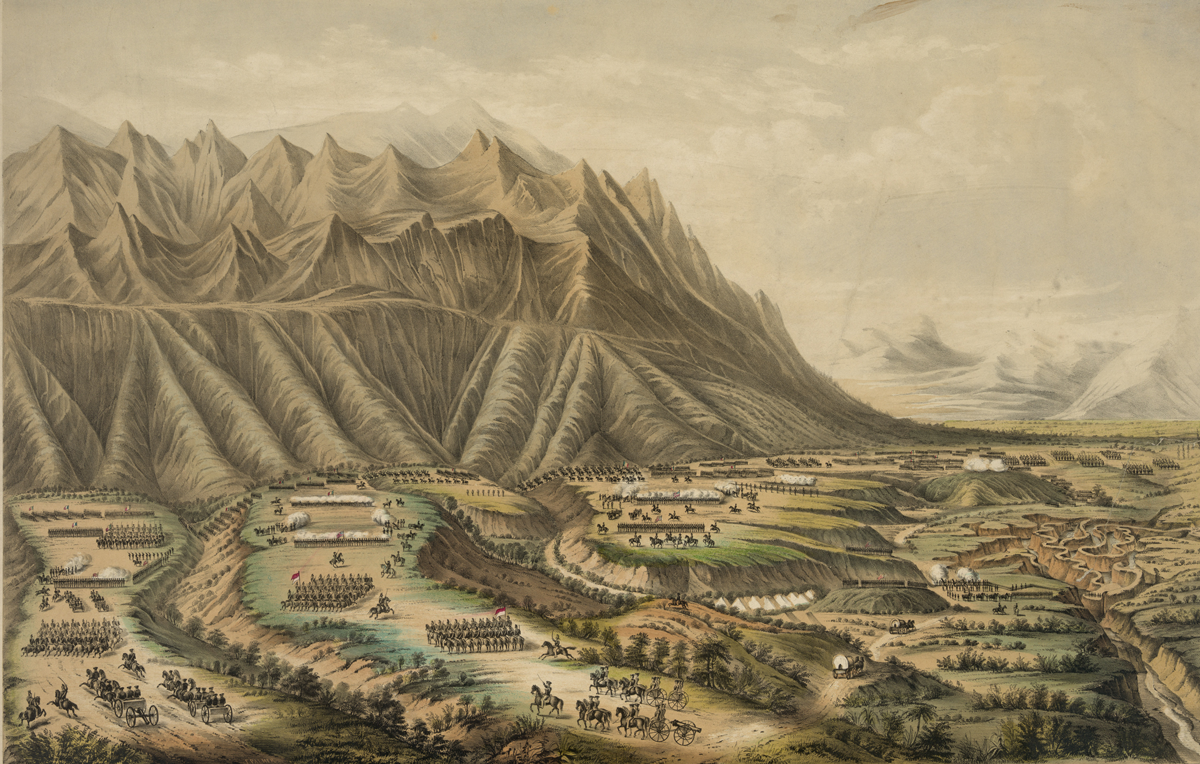
Photos from Library of Congress
Lithograph of the Battle of Buena Vista produced from a sketch taken on the spot by Maj. Eaton, aide de camp to Gen. Zachary Taylor, published by H.R. Robinson of New York.
May 20, 1846
Marking the 175th anniversary of the Battle of Buena Vista
Ohio Gov. Mordecai Bartley issued the first call for troops for the Mexican War on May 20, 1846. The same day, Samuel R. Curtis, adjutant general of Ohio, issued orders directing that a general rendezvous would be established at Camp Washington near Cincinnati. In less than two weeks, 40 companies of Ohio troops were gathered, 10 more than were needed.
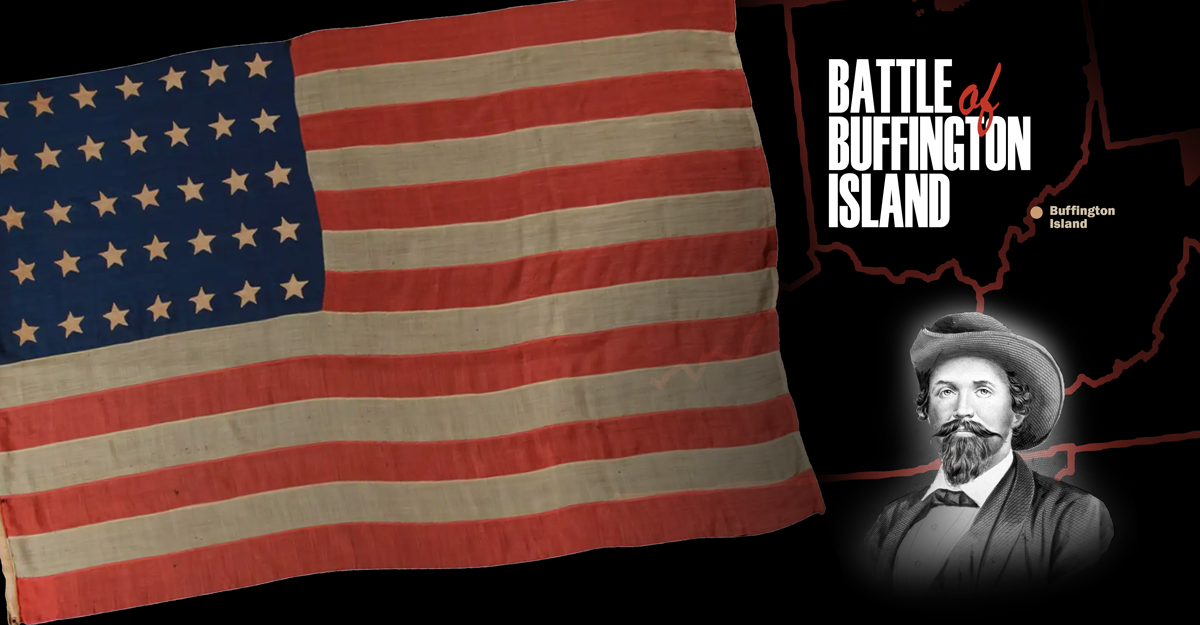
July 1863
Ohio troops halt Morgan’s Raid at Battle of Buffington Island
In July 1863, Confederate Brig. Gen. John Hunt Morgan, pictured, led over 2,000 cavalrymen on a 13-day raid across southern Indiana and Ohio to divert Union troops during the Civil War. Ohio Militia troops were called up as part of Union forces that pursued Morgan, ultimately defeating him and his men during the Battle of Buffington Island, located on the Ohio River in between West Virginia and Ohio.
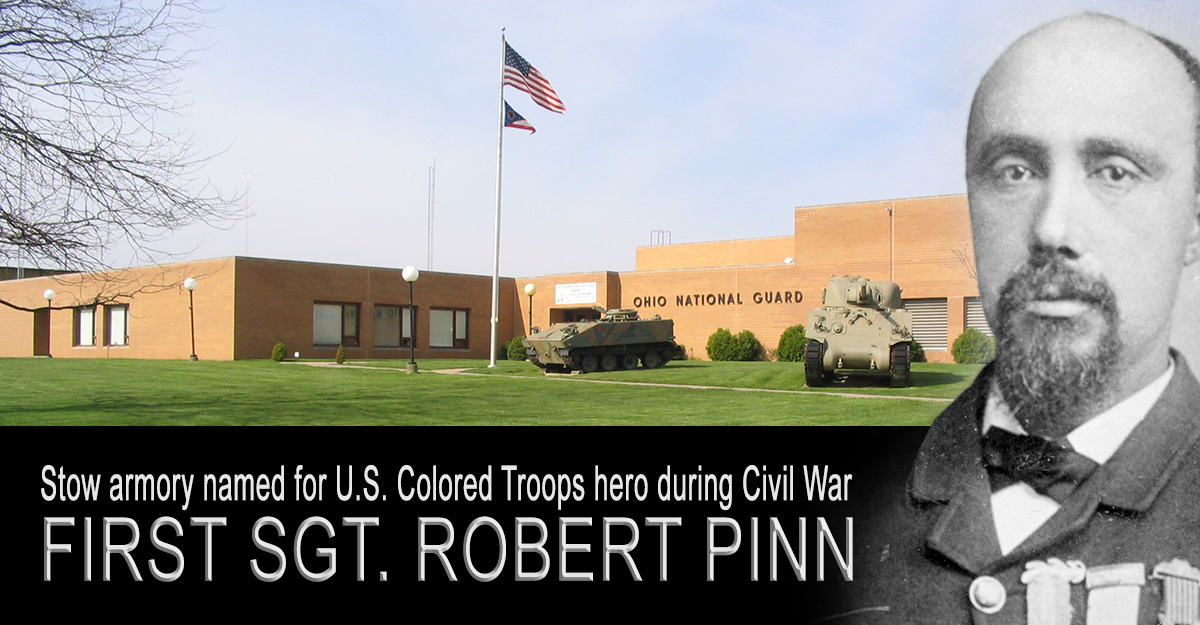
Photos from Ohio National Guard Heritage Center & Library of Congress
Sept. 29, 1864
Stow armory named for U.S. Colored Troops hero during Civil War
First Sgt. Robert Pinn (1843-1911), Company I, 5th United States Colored Troops, earned the Medal of Honor during the Battle of New Market Heights, Va. on Sept. 29, 1864. A native of Stark County, he was the first Black Soldier to have an armory or readiness center named after him in the state, in the early 1970s, when the new Ohio Army National Guard Armory in Stow was opened.
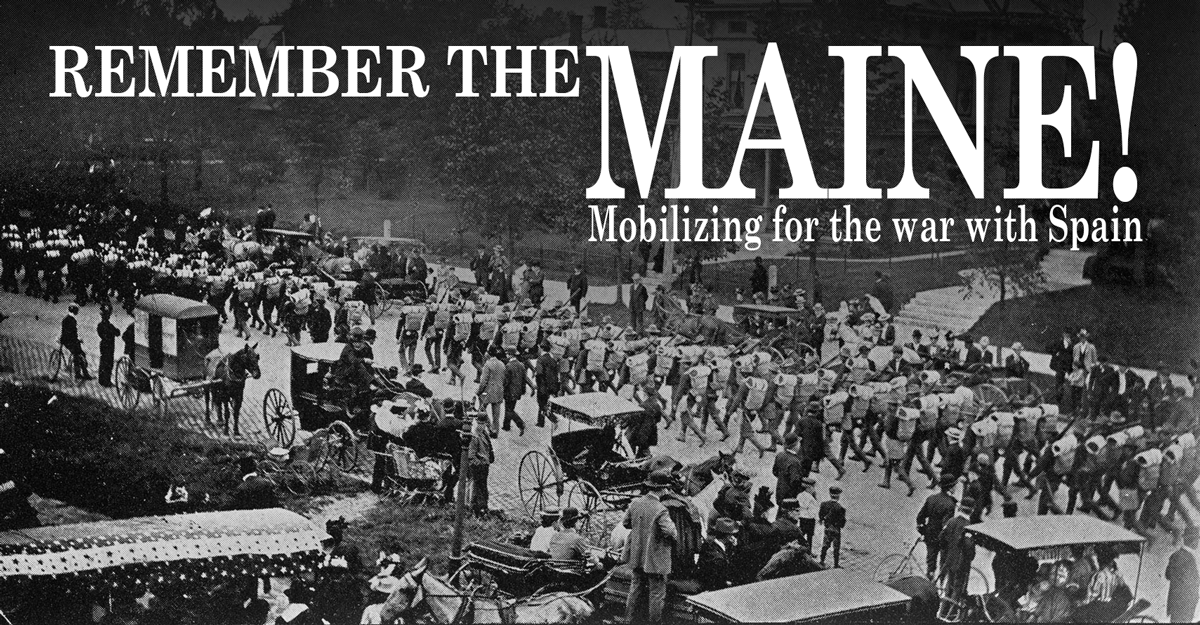
Photo from the Ohio National Guard Heritage Center collection
‘Remember the Maine!’
Mobilizing for the war with Spain
Soldiers from the 4th Ohio Volunteer Infantry depart Camp Bushnell as they march toward the train depot for transportation to Camp Chickamauga, Ga. A mass of people lined the route of march along Broad and High streets to the depot to honor the departure of the Ohio troops.
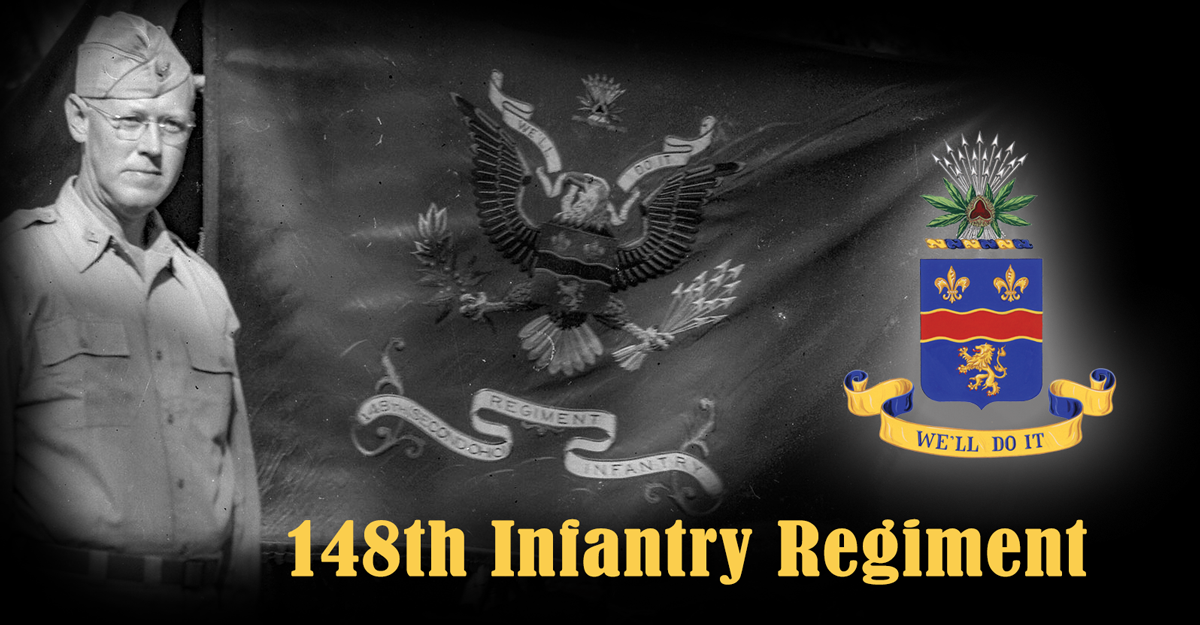
Photo from the Ohio National Guard Heritage Center Collections
March 10, 1941
2-372nd Infantry leaves for World War II service
The 148th Infantry Regiment became the first Ohio National Guard regiment to have a coat of arms approved by the U.S. Army, on April 21, 1923. By Army regulation, each regiment and separate battalion is authorized a coat of arms — consisting of a shield, crest and motto — that is included in the organizational colors. In this photo Col. Stuart Baxter, regimental commander of the 148th Infantry from 1940 to 1943, stands in front of the organizational colors near his tent on the Russell Islands in 1943 during World War II.
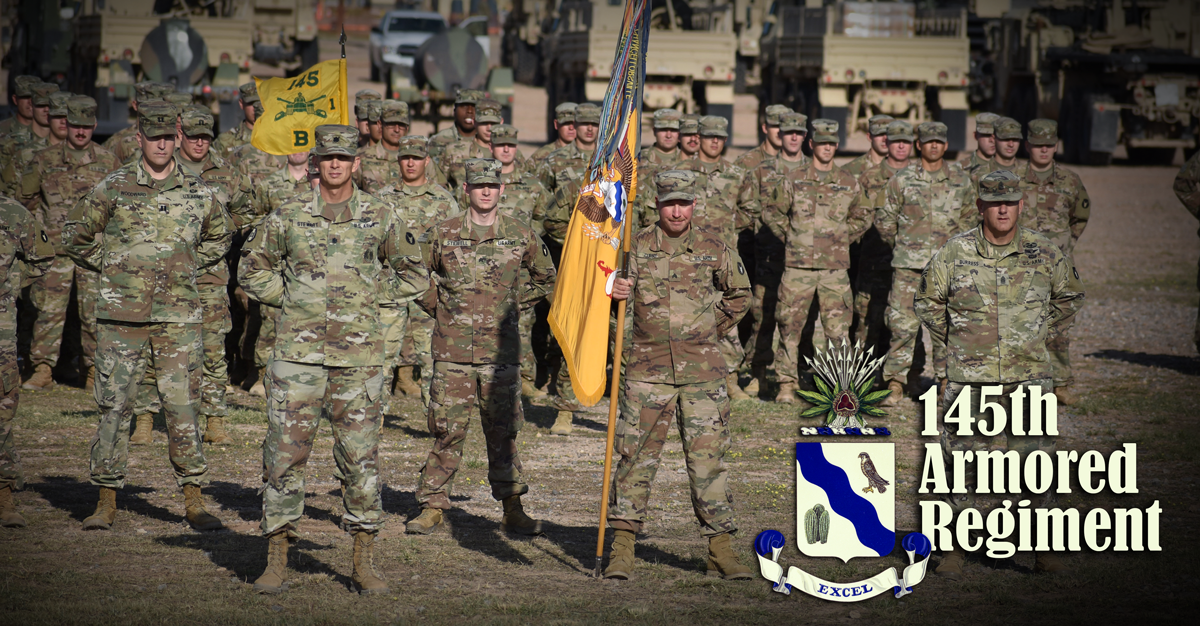
Photo from the Ohio National Guard Heritage Center collection
July 17, 1928
Secretary of War approves 145th Infantry Regiment coat of arms
Lt. Col. Jonathan Stewart (front row, left) and Command Sgt. Maj. Michael Burress (front row, right) of the 1st Battalion, 145th Armored Regiment stand in formation for a unit photo with the organizational colors in October 2019 at Fort Bliss, Texas, prior to an overseas mobilization to support Operation Spartan Shield. The coat of arms, which was passed to the 145th Armored Regiment in 2007, can be seen on the organizational colors.
Video produced by Sgt. 1st Class Josh Mann.
Nov. 25, 1940
Company C, 192nd Tank Battalion inducted into Federal Service
Albert Allen Jr. was with Company C, 192nd Tank Battalion in the Philippines when the Japanese attacked on Dec. 8, 1941, just hours after attacking Pearl Harbor. In this 2003 interview, Allen recalls that day’s events.

Photo from the Ohio National Guard Heritage Center Collections
March 10, 1941
2-372nd Infantry leaves for World War II service
In MARCH 1941, the 2nd Battalion, 372nd Infantry Regiment was inducted into federal service. The all-Black unit was the final formation in the state to enter active duty in response to the growing war in Europe.
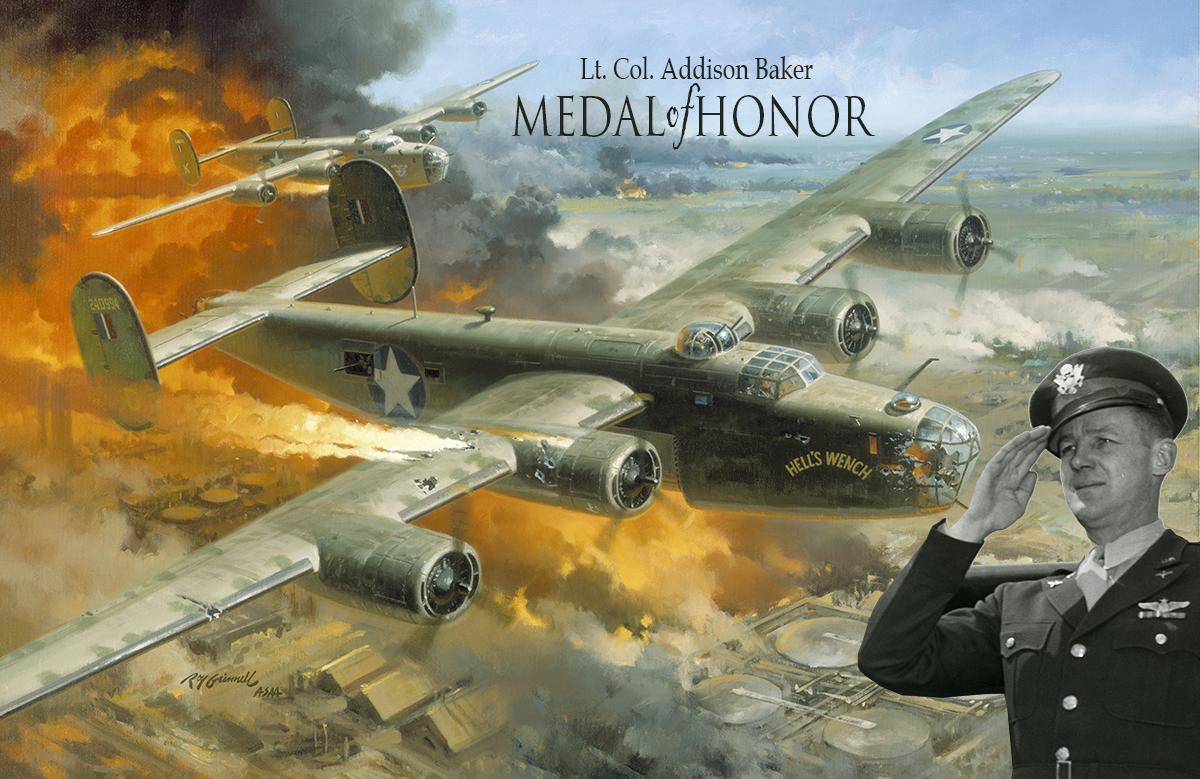
Photo from Ohio National Guard Heritage Center
Aug. 1, 1943
Lt. Col. Addison Baker earns Medal of Honor during WWII
Fire Over Ploesti, National Guard Heritage Series by Roy Grinnell, depicts Lt. Col. Addison Baker’s badly damaged B-24 Liberator, “Hell’s Wench,” during Operation Tidal Wave, Aug. 1, 1943. with Lt. Col. Addison Baker, circa 1943.
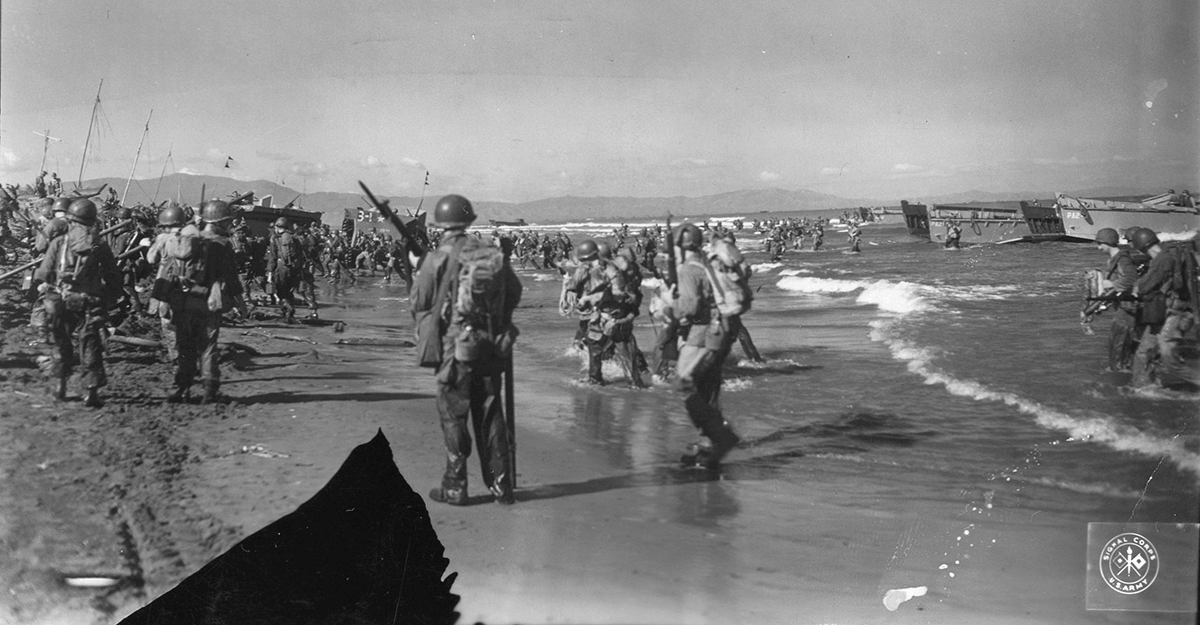
Photo from Ohio National Guard Heritage Center
Jan. 9, 1945
75th anniversary:
37th Infantry Division in the Luzon Campaign
Soldiers, guns and equipment of the 37th Infantry Division pour ashore during the American landing on Lingayen Gulf, Luzon, Philippine Islands, Jan. 9, 1945.
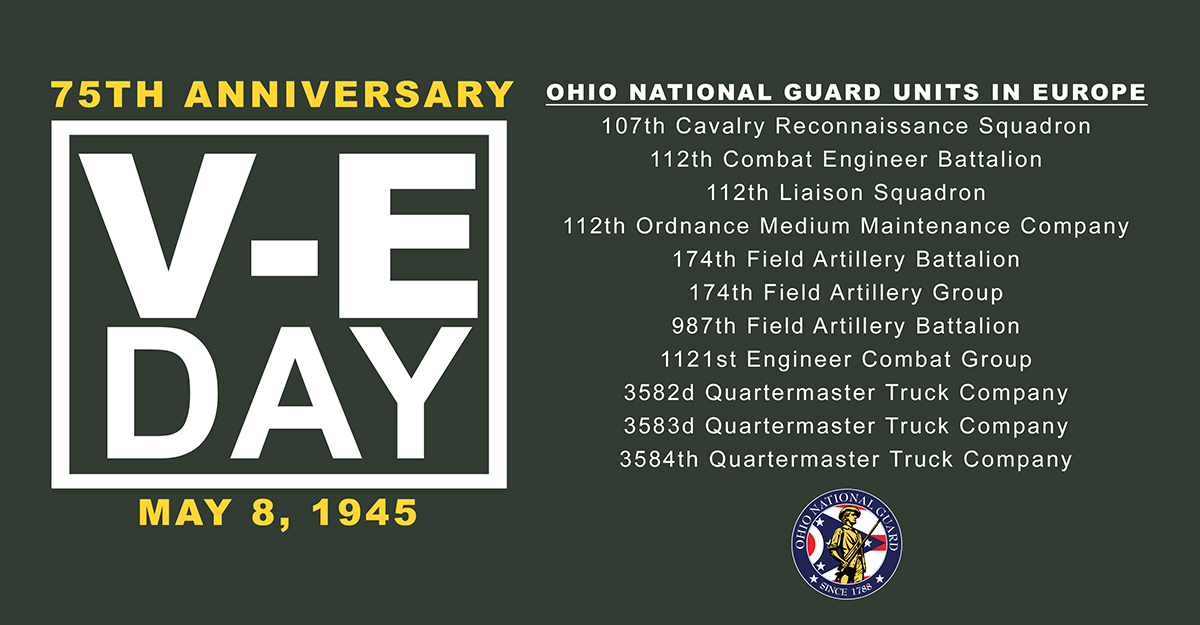
Graphic from Ohio National Guard Heritage Center
May 8, 1945
V-E Day at 75:
The Ohio National Guard in the European Theater
On May 8, 1945, the world celebrated Victory in Europe, or V-E Day, marking the end of World War II in the European Theater of Operations. There were 11 units from the Ohio National Guard that served in the European Theater during the war.
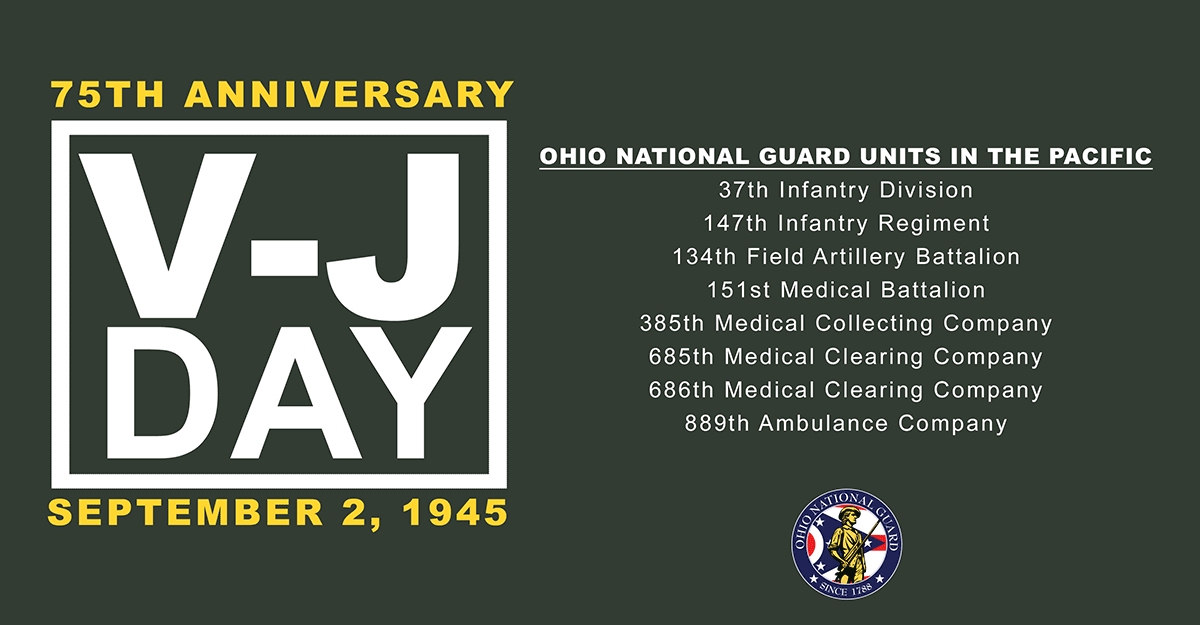
Graphic from Ohio National Guard Heritage Center
Sept. 2, 1945
‘It’s over and we’re coming home soon!’: Marking the 75th anniversary of V-J Day
Sept. 2, 1945 marks the 75th anniversary of V-J Day, or Victory over Japan Day. It was on this day that Imperial Japan surrendered and World War II came to an end. The majority of Ohio National Guard units fought in the Pacific Theater against the Japanese. The most well-known is the 37th Infantry Division, which finished the war on Luzon after 592 days of combat. Led by Maj. Gen. Robert S. Beightler for the duration of the war, the Buckeyes spent the weeks after V-J Day accepting the surrender of over 16,000 Japanese soldiers. Soldiers from Company C, 192nd Tank Battalion, who had been prisoners of war since the fall of Bataan in April 1942, where liberated from numerous camps across Asia. "
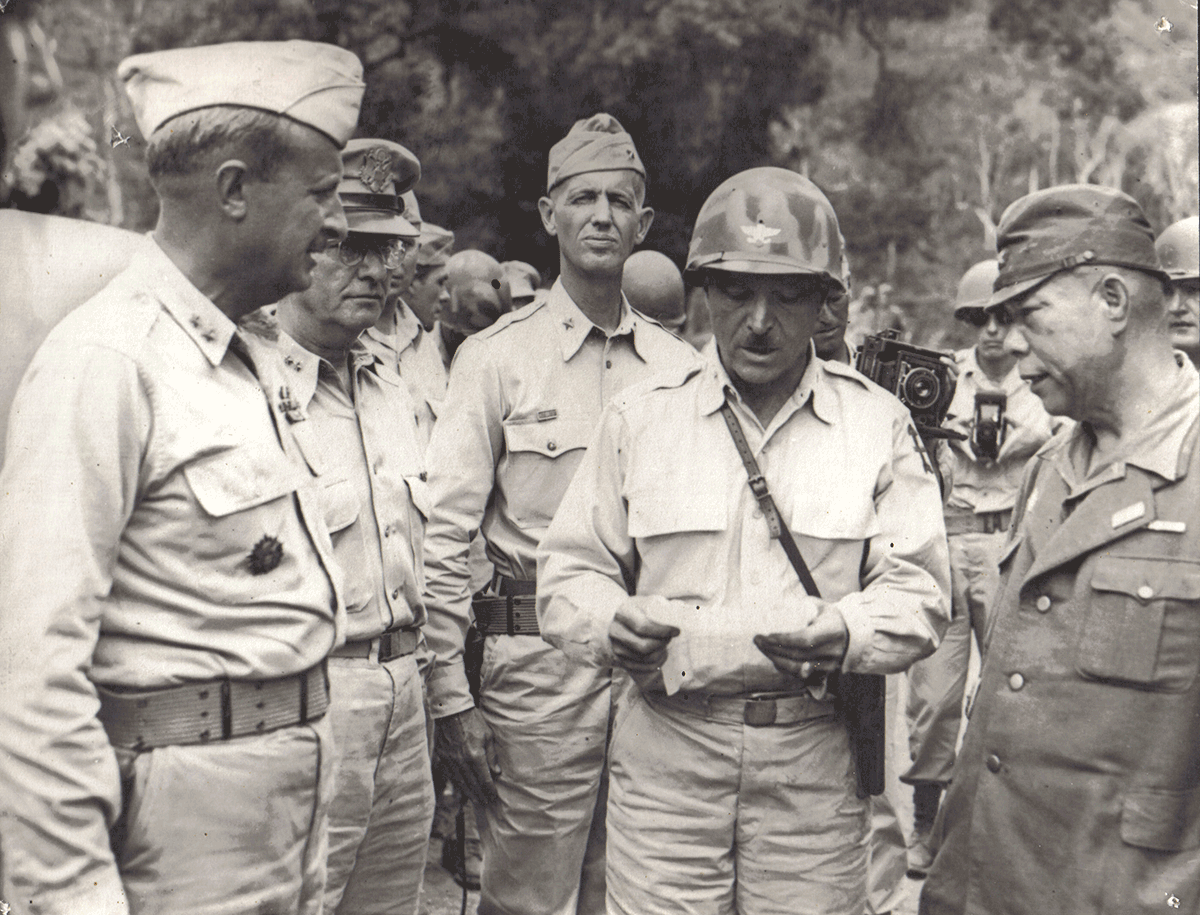
Photo from Ohio National Guard Heritage Center
Sept. 2, 1945
Yamashita Surrenders
Japanese Gen. Tomoyuki Yamishita (far right), the Tiger of Malaya and commander of all Japanese forces in the Philippines, surrenders to U.S. forces. Defiant up to the last moment of surrender in Tokyo, he is seen here discussing the situation of the remaining Japanese forces with Maj. Gen. Robert S. Beightler (far left), commanding general, U.S. Forces in Luzon, Philippine Islands.
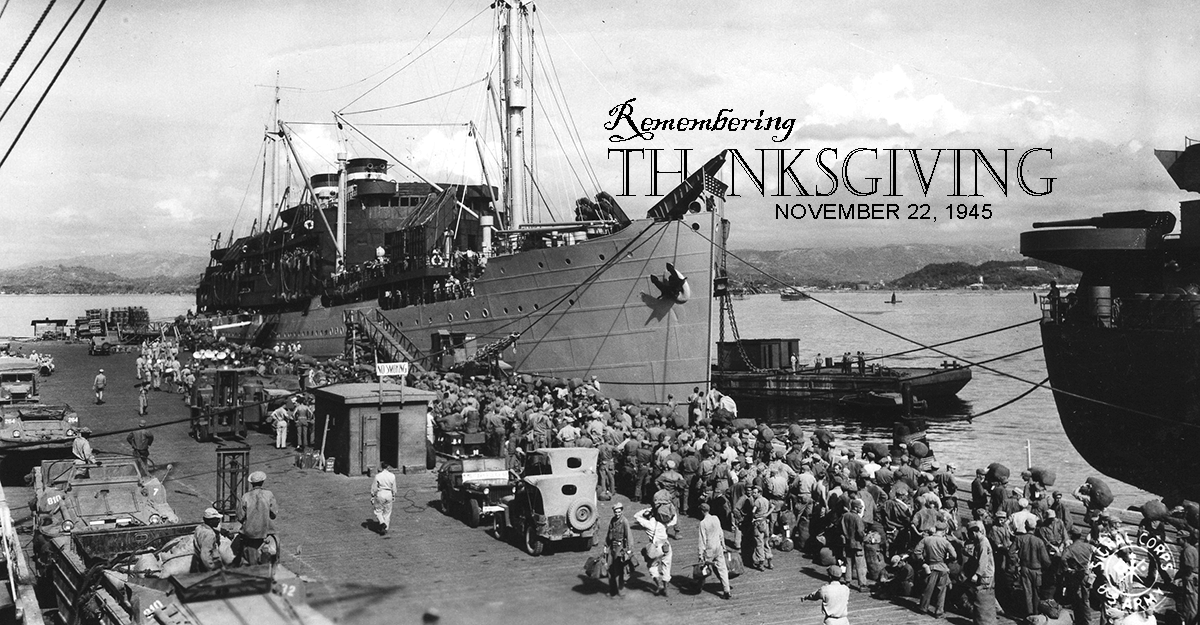
Photo from Ohio National Guard Heritage Center
Nov. 22, 1945
Heading home from the war on Thanksgiving Day 1945
The U.S. Army Transport Puebla is shown loading 2,000 Soldiers of the 37th Infantry Division for their return to the United States on Thanksgiving Day, Nov. 22, 1945, at San Fernando, La Union, Luzon, Philippine Islands. The 37th had been overseas since May 1942 and had accumulated 592 days of combat on New Georgia, Bougainville and Luzon.
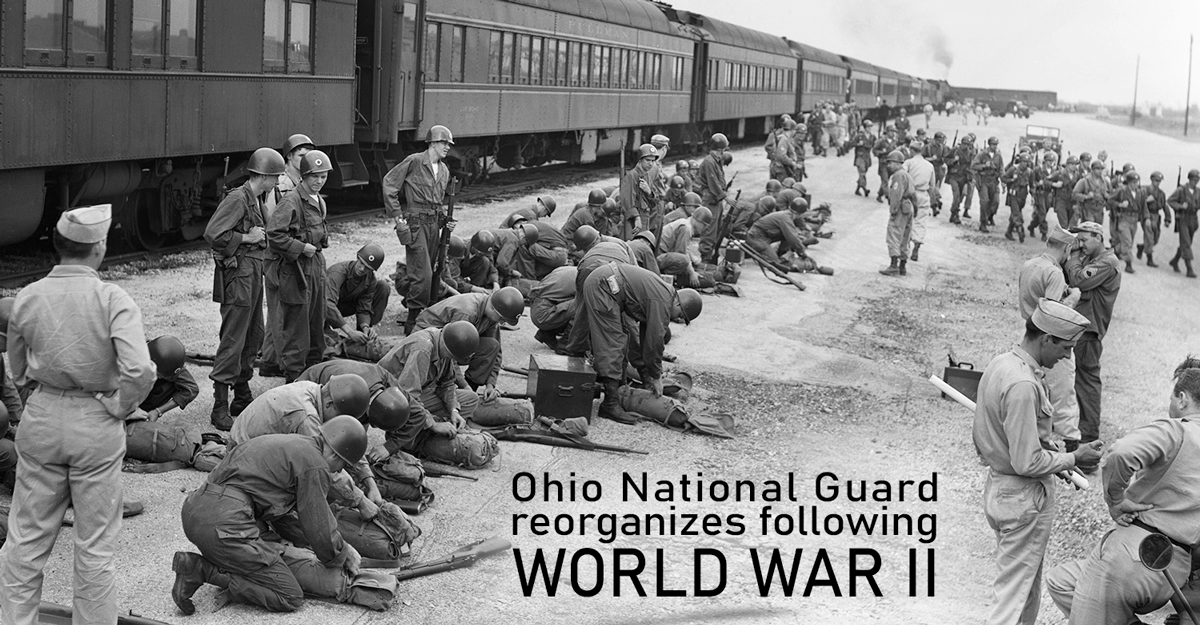
Photo from Ohio National Guard Heritage Center
Ohio National Guard reorganizes following World War II
No sooner had the guns fell silent at the end of World War II, the Ohio National Guard began to make plans for its reorganization back home. The state was initially allotted an authorized force structure totaling 27,000 personnel, with the largest piece of that being the reorganized 37th Infantry Division. Read more in the latest Buckeye Guard online publication.
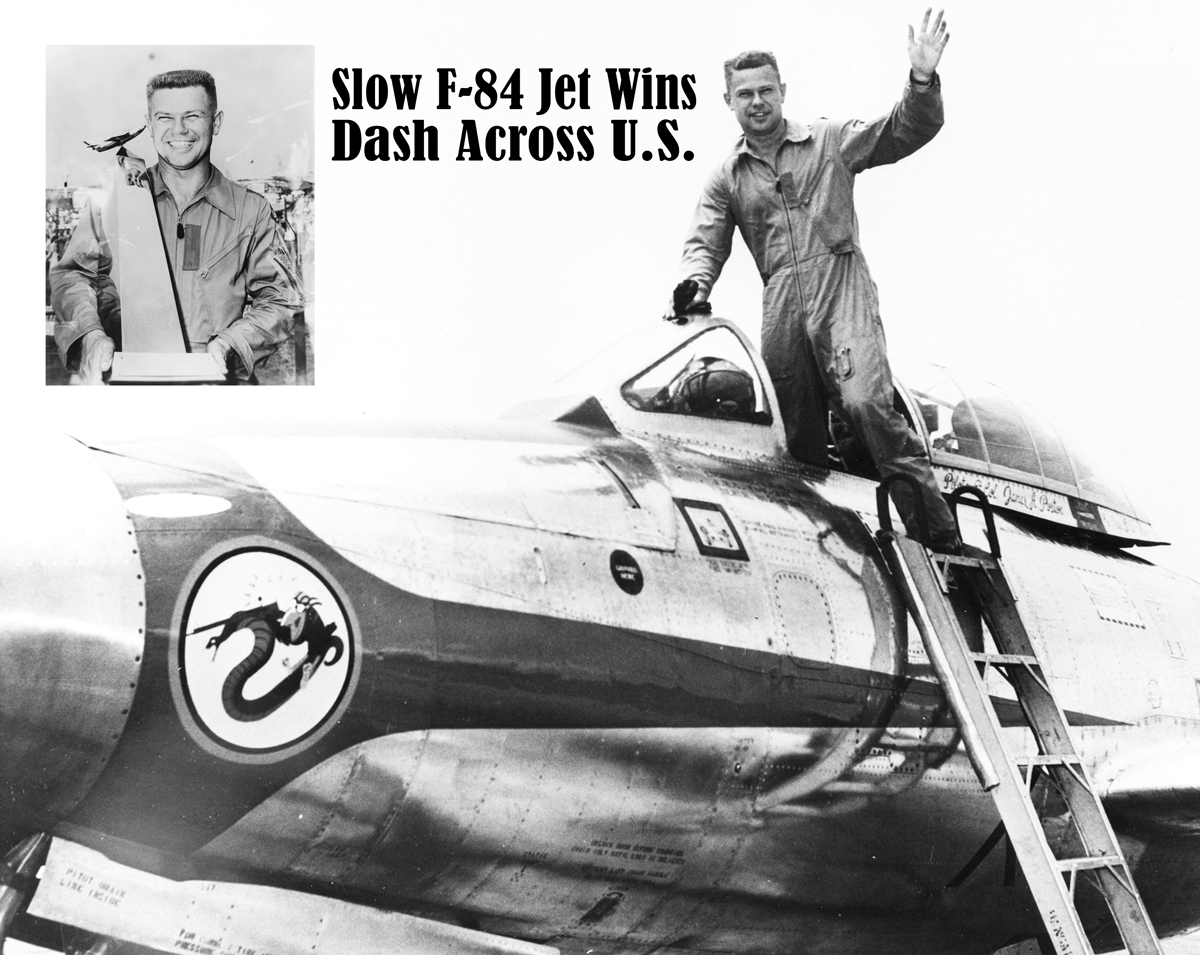
Photo from Ohio National Guard Heritage Center
July 02, 1955
Ohio Air National Guard pilot wins cross-country jet race
“Slow F-84 Jet Wins Dash Across U.S.” was the newspaper headline that announced Lt. Col. James Poston of the 166th Fighter-Interceptor Squadron as the winner of the 1955 Ricks Memorial Trophy race that took place on July 2, 1955. Poston raced the 1,945 miles from Ontario, Calif. to Detroit in 3 hours, 32 minutes at an average speed of 546 miles per hour in a F84E “Thunderjet.”
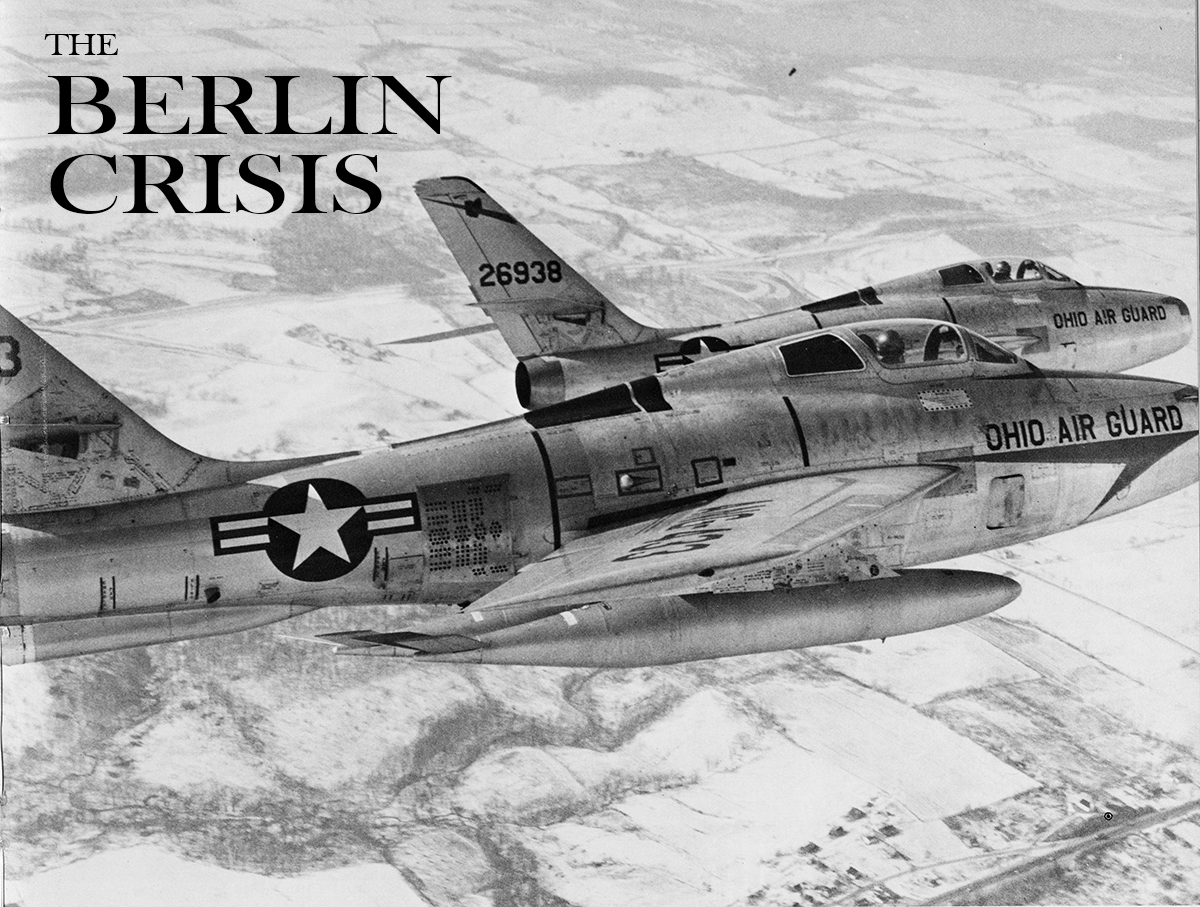
Photo from Ohio National Guard Heritage Center
Oct. 1, 1961
The Berlin Crisis
F-84F “Thunderstreaks” of the 166th Tactical Fighter Squadron, 121st Tactical Fighter Wing fly over Etain, France during the unit’s mobilization for the Berlin Crisis in 1961-62.

Photo courtesy of NASA
April 11, 1970
‘Houston, we’ve had a problem’:
Ohio ANG pilot part of famed Apollo 13 spaceflight; later chronicled in movie
On April 11, 1970, Apollo 13 launched from Kennedy Space Center in Florida with the mission of landing on the moon. The crew included lunar module pilot Fred Haise (right), a former fighter pilot with the Ohio Air National Guard’s 164th Tactical Fighter Squadron in Mansfield, Ohio. It was scheduled to be the third lunar landing, but the mission was aborted en route after an oxygen tank exploded and ruptured in the service module. The mission was depicted in the 1995 film “Apollo 13.” (Photo courtesy of NASA)
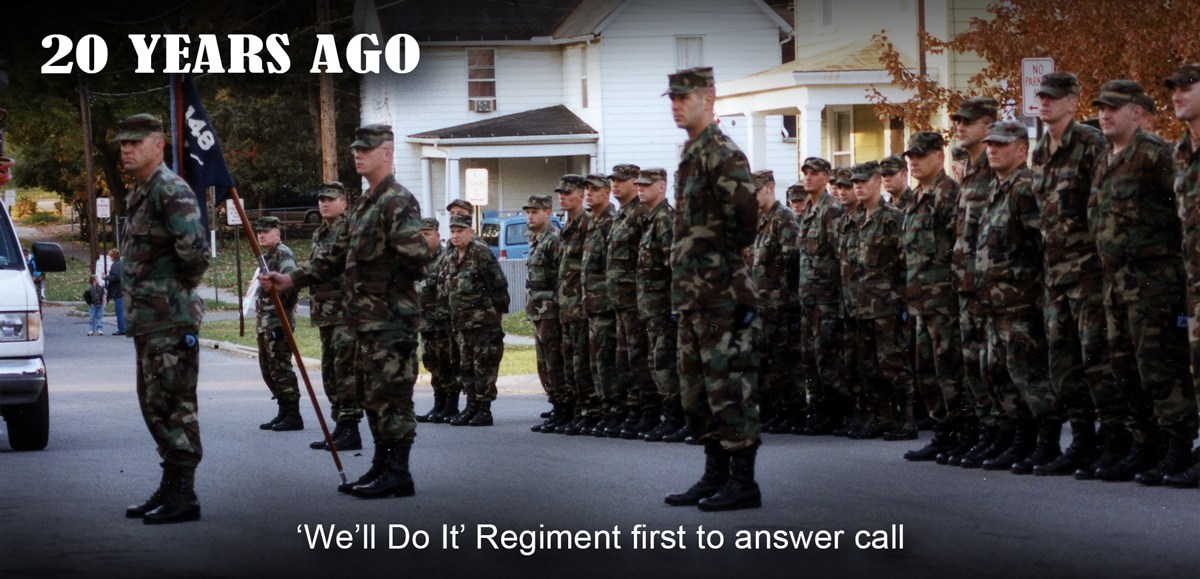
Photo from Ohio National Guard Heritage Center Collections
Sept. 11, 2001
20 years ago: ‘We’ll Do It’ Regiment first to answer call
Just weeks following the 9/11 terrorist attacks, the 1-148th Infantry Regiment was the first Ohio National Guard unit to receive federal mobilization orders for Operation Noble Eagle. It was the first time since 1952 — for the Korean War — that the 148th had been ordered into federal service.